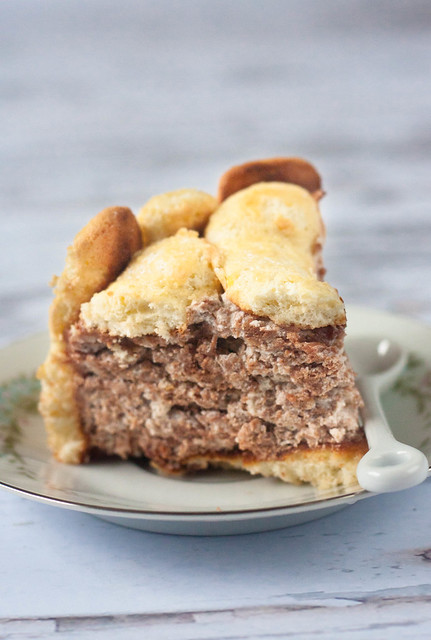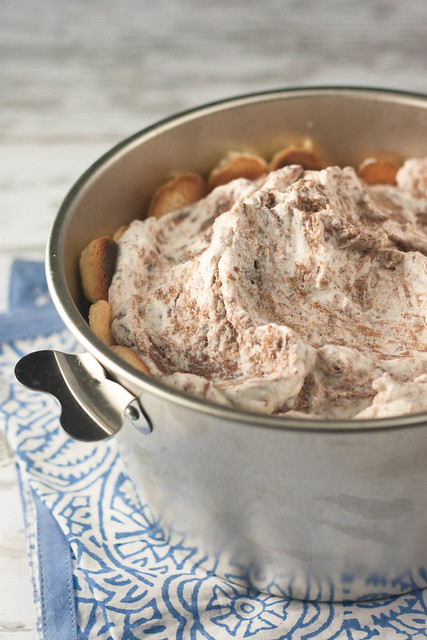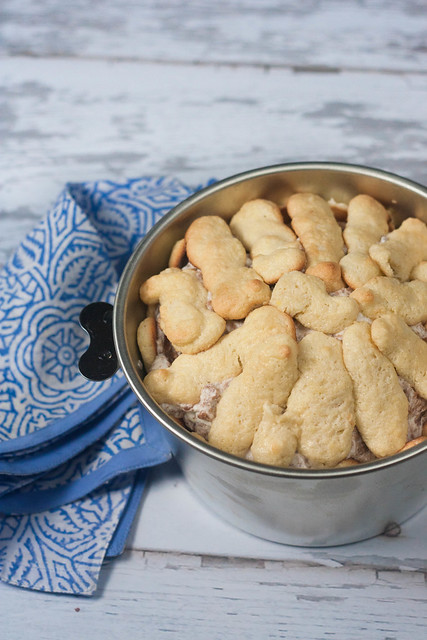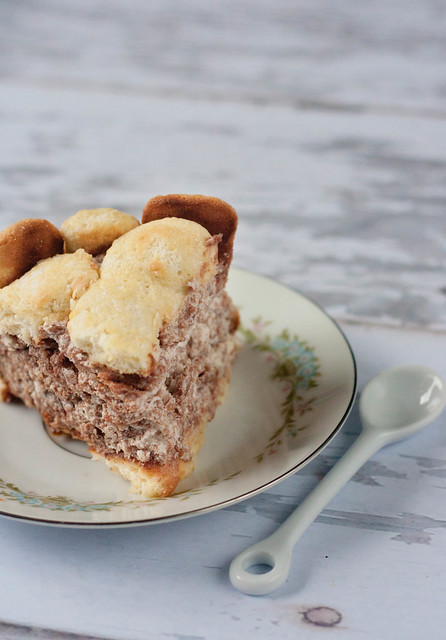Charlotte au Chocolate
Charlotte au Chocolate, sounds so fancy doesn't it? And it kind of is. If you start from the beginning, by making your own ladyfingers, it's not the simplest of recipes. But R gave me my very own charlotte mold for Valentine's day last year (and by gave me, I mean I ordered it on Amazon and then announced that I loved his thoughtful v-day gift) and as a reward I made a chocolate charlotte.
So when we had some friends over for dinner the other week, and I asked R for his input as to dessert, he immediately asked for chocolate charlotte. And I couldn't dissuade him, which I kind of wanted to do. Not because this dessert isn't delicious (It is. I thought R was going to lose it in the silent and completely non-dramatic way he tends to lose it when I suggested I make something else.), but because it is kind of a pain if you start at the beginning, which, however, is completely worth doing. You can see my last post for a great ladyfinger recipe.
So, the charlotte. There are two main types, cooked and uncooked. The cooked version is probably slightly older (although both originate from around the end of the 18th century), and based on an English dessert that featured stewed apples surrounded by buttered bread. This chilled version is based on the charlotte russe, or Russian charlotte, invented by the French chef Carême at the beginning of the 19th century while he was working in England and probably inspired by their cooked version. The charlotte russe replaces the buttered bread with spongecake or ladyfingers arranged in a charlotte mold, which is then filled with cream or mousse flavored with chocolate or coffee, for example. They can also be filled with a fruit mousse, like strawberry or raspberry.
In this version, one adapted from Martha Stewart and decidedly of the charlotte russe variety, the ladyfingers are sprinkled with Grand Marnier in much the same say the ladyfingers of a tiramisu might be dredged in coffee and liquor. As I wrote in my last post, the ladyfinger does, after all, originate (as the story goes) in Savoy, a land historically shared by the French and the Italians. Which is why you can use this ladyfinger recipe, although Italian, it's perfect for this French dessert.
Charlotte au Chocolate
Adopted from Martha Stewart's Entertaining
1 batch Ladyfingers
2 tablespoons orange liqueur mixed with 2 tablespoons water
For the filling:
1/2 pound or 2 sticks unsalted butter, softened
3/4 cup sugar
1/4 cup orange liqueur
1/4 teaspoon almond extract
1 cup slivered, blanched almonds, pulverized
4 ounces semisweet chocolate
1/4 cup espresso coffee
2 cups whipping cream
Start by melting the chocolate together with the espresso. To do this, put the chocolate into either the top part of a double boiler or into a microwave-safe bowl. Pour the espresso over the chocolate and then, if using a double boiler, set the chocolate over a bowl of lightly simmering water. If using a microwave, place the bowl in the microwave and heat for 30 seconds. The chocolate may not be completely melted after this amount of time, but if you just stir it a bit it will melt the rest of the way. Return to the microwave if necessary. Set the melted chocolate aside to cool a bit.
Cream the butter and sugar together in the bowl of an electric mixer using the paddle attachment. The mixture will be fluffy and a pale yellow color. Add the liqueur and the almond extract, continuing to beat until smooth. Add the almonds and the melted chocolate then set aside to be sure it has cooled completely.
In another bowl, whip the cream until thick and almost stiff. Fold the cream into the chocolate mixture.
To make the charlotte:
Line the bottom of a 2-quart charlotte mold with a round of parchment paper. Fit a layer of ladyfingers into the bottom. You make have to cut or break some of them to make them fit, and you can use the scraps to fill in any holes. Place them round-side down so that the flat, browned side is facing up. Sprinkle a bit of the liqueur/water mixture on this layer.
Next, arrange more ladyfingers around the sides of the mold, again with the rounded side out so that the flat, browned side is facing in.
Pour the chocolate cream mixture into the mold. Arrange a final layer of ladyfingers over the top of the cream, only this time dip them briefly in the liqueur/water mixture before placing them on the cream. Again, place them so that the rounded side is out and the flat, browned side is facing in.
Cover the charlotte with plastic wrap and set in the refrigerator for at least 6 hours. To serve, place a plate on top of the mold and flip it over, sliding the mold off of the charlotte so that it rests on the plate. Remove the round of waxed paper and it's ready to eat.




Comments